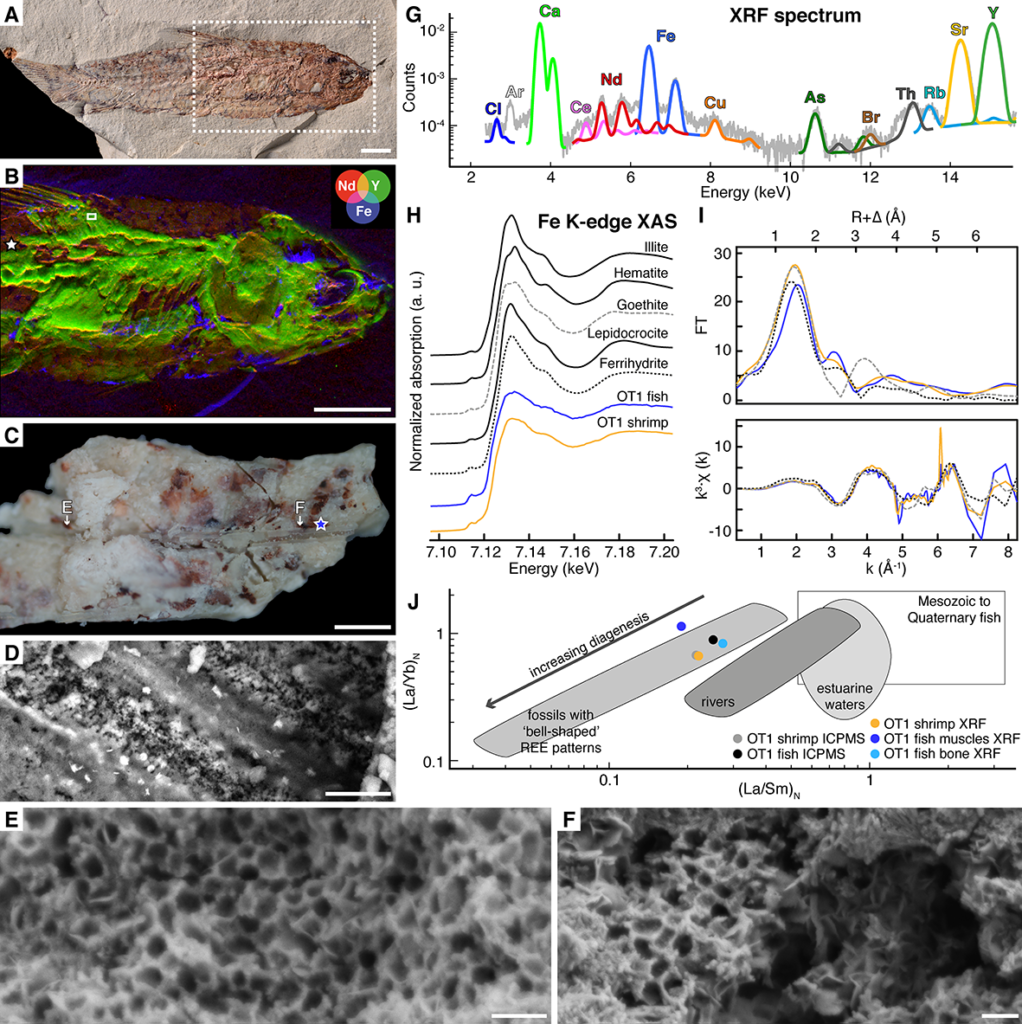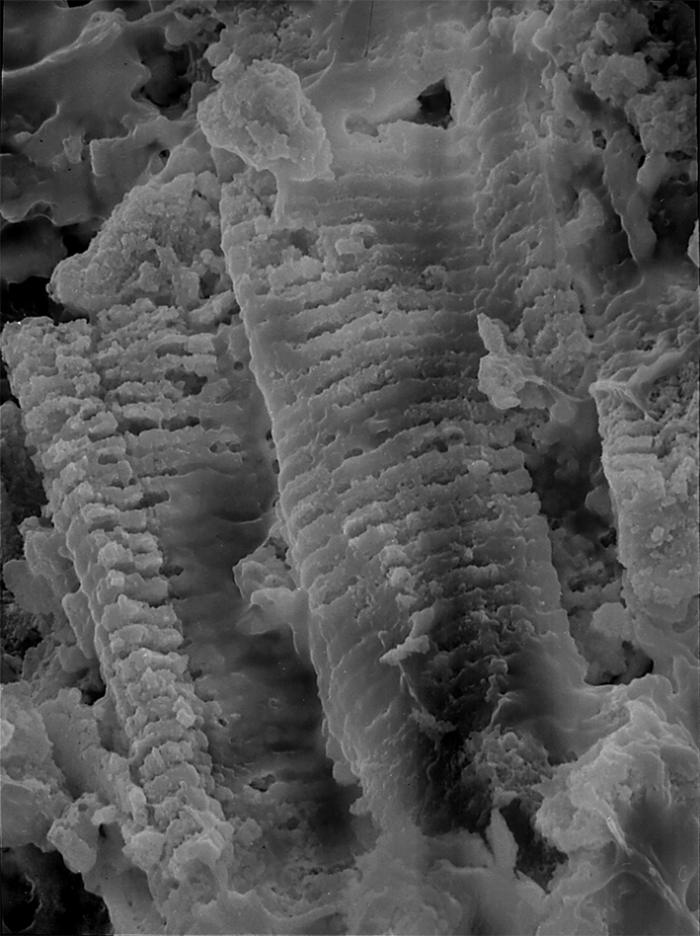A paper long in the making, which I led while a postdoc at SOLEIL and IPANEMA, is finally published today in the journal Geology. In this article, I investigated exceptional preservation through phosphatization from a fossil perspective.
Soft-tissue phosphatization, i.e., calcium phosphate mineralization occurring prior to the degradational collapse of cellular tissues, provides the most spectacular fossils of animals, still exhibiting subcellular. Most of the time, soft tissues are pseudomorphically replaced by francolite (a carbonate-rich fluorapatite), as is the case of the iconic ca. 110 Ma fossil fishes from the Santana Formation of Brazil. Laboratory experiments have suggested that phosphatization results from a decay-induced fall in pH under anaerobic conditions, the decrease of pH being responsible for a switch from carbonate to phosphate precipitation. However, authigenic phosphates such as francolite are known to precipitate under a range of redox conditions, including oxic to suboxic conditions. Phosphatization also requires a sufficient concentration of phosphorus. Closed systems, such as those built by biofilms growing around carcasses, promote apatite precipitation by trapping, which is released by organic matter degradation under oxic conditions.
We report an in-depth and in situ assessment of the redox conditions having prevailed during the phosphatization of “exceptionally preserved” Cretaceous fossils of fishes and crustaceans from the Jebel oum Tkout (OT1) Lagerstätte of Morocco. Data collected using complementary laboratory and synchrotron-based X-ray techniques reveal that oxidative conditions were established at a certain step of decay. Supporting these conclusions are the presence, covering and embedded in the phosphatized tissues, of Fe(III)-rich mineral phases, the precipitation of which was likely biologically induced during decay. The present study highlights that the establishment of oxidative conditions during decay can be compatible with exceptional preservation of fossils through phosphatization.

Reference: Gueriau P., Bernard S., Farges F., Mocuta C., Dutheil D.B., Adatte T., Bomou B., Godet M., Thiaudière D., Charbonnier S. & Bertrand L. 2020. Oxidative conditions can lead to exceptional preservation through phosphatization. Geology. Published online July 31, 2020. doi:10.1130/G45924.1. Find the article here
